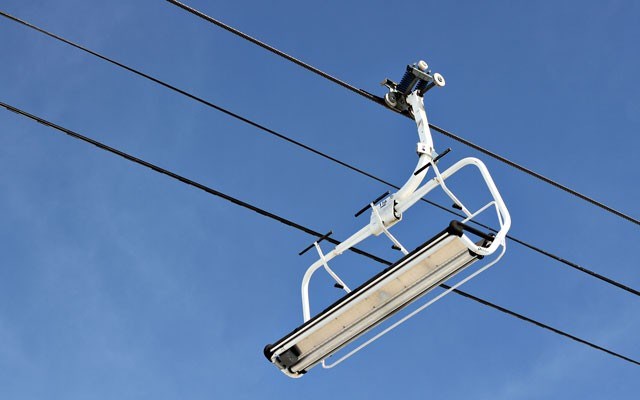The BC Safety Authority (BCSA) has released its findings into a 2014 incident at Crystal Mountain Resort near Kelowna.
On March 1, 2014, a fixed-grip double chairlift detached at the resort, with three chairs striking the snow. Two of them were carrying passengers. Four people were taken to hospital due to the incident.
In its report, the BCSA said the primary cause of the incident was low tension within the haul rope system, directly caused by the counterweight being in contact with the ground.
The report details a number of contributing factors to the incident, including improper set up of counterweight and carriage monitoring circuits, exposure of the counterweight to contamination and a poor understanding relating to the elements of the tensioning system and haul rope dynamics.
For Whistler Blackcomb (WB), incidents such as the one at Crystal Mountain serve as a reminder to stay vigilant.
In 1995, two people died and eight were injured after four chairs fell from the now-defunct Quicksilver Express on Whistler.
In 2008, 12 people were injured when a tower collapsed on the Excalibur Gondola on Blackcomb.
"We work closely with the BCSA and the lift manufacturers, and when an incident like this happens we look at the root causes of the incident and review our procedures to ensure that we're doing everything that we can to prevent an incident like that at Whistler Blackcomb," said Wayne Wiltse, WB's lift maintenance manager.
Wiltse said that while incidents like that seen at Crystal Mountain are not common, safety is always a top priority for WB.
Before opening the mountain each morning, Wiltse and his crew do preoperational inspections on all of WB's ropeways.
"Right now I have a crew of 50 on the mechanical side and 20 on the electrical side," he said.
"So every day we're doing the inspections, we're looking at carriages, counterweights, making sure everything is in proper running order prior to operation."
Time spent doing inspections varies depending on the lift, Wiltse said.
"For example, the Peak 2 Peak, it's probably close to two hours prior to public operation that the guys are checking switches," he said.
"We also ride the line prior to putting the public on and make sure everything's in order."
For some ski areas, keeping qualified mechanics can be difficult. But the year-round nature of WB's operations means Wiltse's crew is made up of professional tradespeople who know the lay of the land.
"We're fortunate. We have some turnover, but we don't have a lot of turnover," he said.
"We have a lot of long-term employees working in the maintenance department."
In its report, the BCSA includes seven recommendations to prevent further occurrences, including annual inspections of counterweights and better training and certification for ropeway mechanics.
"This incident can be attributed to a number of contributing factors, which is why we have made seven improvement recommendations including an important recommendation towards the development of a Passenger Ropeway Mechanic Certification Program in BC," said BCSA's safety manager of passenger ropeways and amusement devices Jason Gill in a release.
To view the full report visit www.bcsafetyauthority.ca.




